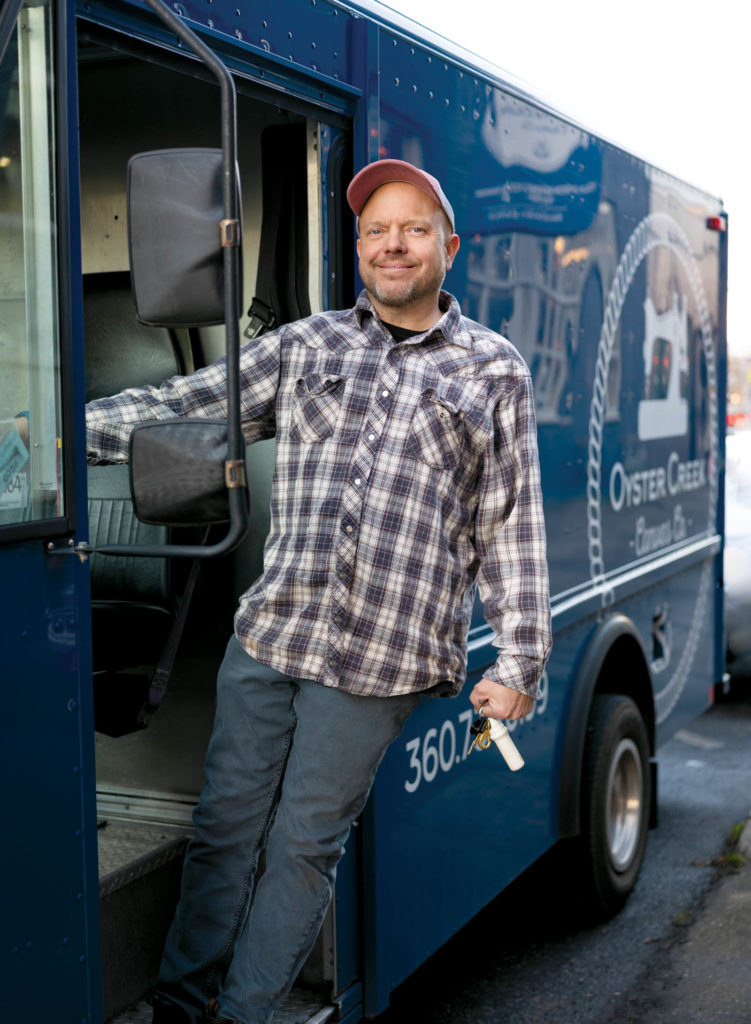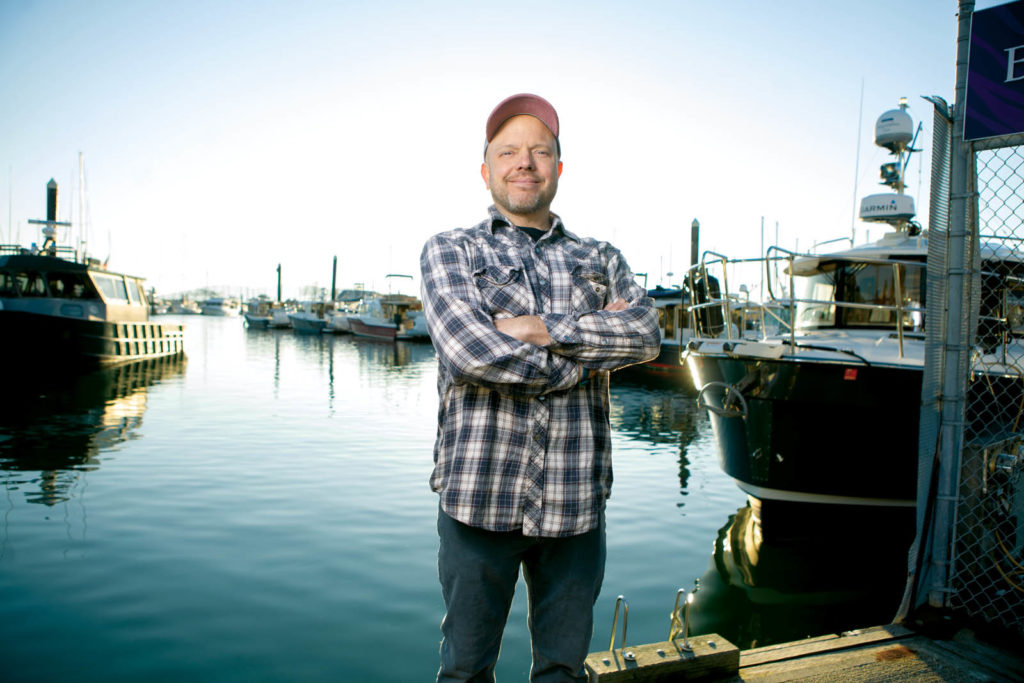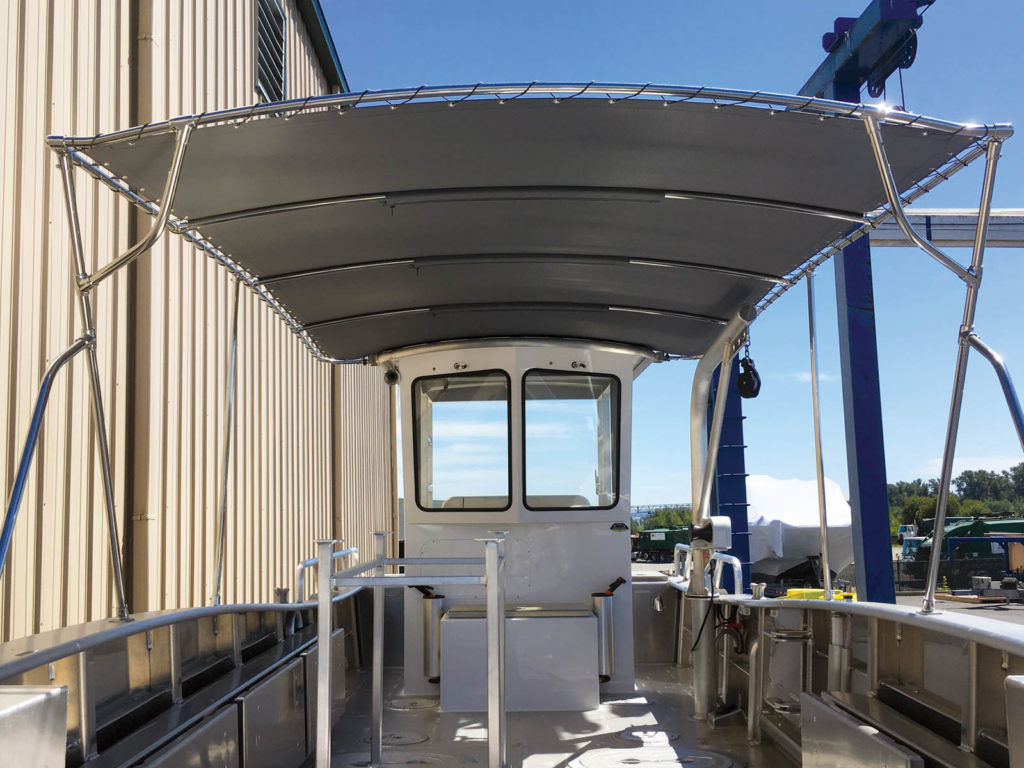
If a college friend hadn’t had extra space in a harborside building he was renting in downtown Bellingham, Greg Keeler may have never started up Washington-based marine canvas company Oyster Creek Canvas Co.
After earning a degree in environmental policy and assessment, the lifelong boating enthusiast had spent several years in a related desk job. But after being laid off, Keeler began working in salvage diving and boat maintenance. When the rental space was offered, he grabbed it. He had no plans to become an entrepreneur.
“I didn’t even know what I was going to do with this newly rented space,” he says, “but then I acquired an old antique sewing machine and learned to use it.”
Studying craft to learn the craft
Taking a leap of faith, Keeler taught himself enough sewing and production skills to make his business viable. Initially, maintaining cash flow was his greatest problem.
“The prices people paid for my work back then probably reflected on the quality of the work,” he remembers. “It didn’t look perfect, but it worked. I flew by the seat of my pants.”
Even today most of his business comes via word of mouth from boating club members and other tradespeople around the wharf.
“Somebody sees something and asks, ‘Who made that enclosure?’ and that’s our marketing—our product and customer testimonials. We’ve spent nothing on advertising other than small brochures.”
Sewing up profits, product by product
Over time, Keeler’s one-man, one-machine shop grew to include 15 machines, five full-time workers and one part-timer. Projects have also become larger and more complex, spanning a variety of custom-made boat coverings.
That’s not to say the way forward has always been smooth. In fact, Keeler thought his venture might fail. The game-changer came 21 years ago with his participation in the Marine Fabricators Association (MFA) conference.
“That really changed things for me,” he says. “I met all these great people, and I saw that this is an actual industry. Some of the people who were building this cool stuff were like legends to me.
“Most people saw marine canvas as a tarp–just a cover for your boat. But these people were billing at a high rate and creating something unique; marine canvas wasn’t an afterthought in the hierarchy of boat expenses. That stuck with me.
“That’s when a real shift started happening. I had resources, I saw what other people were doing and I could call people.”
After that, he says, the company began to run like a well-oiled machine.
“From phone call to finished product, it’s a smooth, well-defined path,” he says.
Navigating through the pandemic
For Keeler, the COVID-19 pandemic threatened both his business and his personal life. He was able to secure an “essential business” ranking so he and his crew could avoid layoffs by making personal protective equipment (PPE) gear.
Keeler also established a Vancouver Island subsidiary called Clear Advantage PPE that serves two purposes. While it generates more PPE products, it also helps cut through the COVID-related red tape that can ensue when Keeler crosses the border to see his Canadian wife. Though the couple has been married three years, and each has dual citizenship, she remains in Canada for the country’s health care benefits, while he lives in the U.S. to be close to work.
Throughout the pandemic, Oyster Creek continued making marine products in anticipation of future demand.
“No one knew when this pandemic was going to end, so we concentrated on where we want to be when it eventually does end,” Keeler explains of his business strategy.
Riding the wave of demand
It was fortunate that Oyster Creek kept moving full steam ahead with marine fabrication because Keeler describes his sales as “through the roof” as affluent clients continue to embrace boating.
His primary customer base? Custom boat manufacturers, boat brokers and high-end boaters based in northwest Washington or the state’s San Juan Islands.
“These are million-dollar boats,” Keeler confirms. “The custom builders we work for are years out on their orders. Talking to dealers and brokers, they’ve never seen anything like this,” Keeler says. “We’re now scheduling six or seven months out, where normally it would be closer to three.”
While others in the industry have complained of lengthy lead times on materials, Keeler says Oyster Creek has had few problems securing the goods it needs.
“We’ve had a few delays, but for most larger projects we book so far out that we order materials early even if we’re not going to start for six months,” he explains.
Despite heightened demand, Keeler has no plans to add employees or try to boost production volume. “We’re at a sweet spot, right where we want to be.”
That said, he doesn’t expect industry demand to slow anytime soon.
“I think people love boating, and no matter what happens they will always have some money to throw at their boats.”

Bragging rights
Asked about his company’s claims to fame, Keeler points to an unconventional Oyster Creek policy that allows employees to work on their own projects in the shop, after hours, at no charge.
“Our claim to fame is our culture—it’s a really fun place to work,” he notes. “I want my employees to do well, so if they want to generate more income, I say do it. It helps with employee retention and happiness.”
On the horizon
All things considered, Keeler foresees no sweeping changes for Oyster Creek now.
“We’re going to keep a focus on what we do best. We have a good system, and I think rather than branching out, we have enough work to focus on what we already do.”
One day, Keeler’s 18-year-old son Fin may want to take over the business, but for now, “I want him to go out and see the world a bit and do something else for a while,” he notes.
These days, it’s easy for Keeler to laugh about his parents’ skepticism when he first started his thriving venture.
“For a long time, they thought ‘You just did four years of college and now you’re washing boats?’ Now it’s different, and suddenly I’m the guy with the cool company, and I get paid to play around on boats. I’m 51, but I still feel like a kid.”
Michelle Miron is a freelance writer based in Hugo, Minn.
Photography by Steve Johnston – ExposureLeak
SIDEBAR: Project Snapshot

Bimini boats
“It’s hard to nail down a specific project that I’m really proud of, but I am proud of the lace on bimini tops I build for Munson Boats,” says Keeler of his work with the Burlington, Wash., welded aluminum boat manufacturer. “I have to design framework for forward-facing biminis that can stand up to high speeds and not blow apart or shake in the wind. Each one is custom and has to be made to accommodate different setups like davits, cranes, dive winches, and so on. Most of the boats they build are for industrial use, so that has to be taken into consideration when designing and building a strong frame and top.”
SIDEBAR: Q&A
What advice do you have for industry newcomers?
“Go talk to other shops, people who have already done it, and don’t be afraid to ask questions,” Keeler says. “If I had it to do differently, I’d get somebody into a management position sooner. I’ve tried to have bookkeepers and accountants, whose services can be quite expensive for a small business. Unfortunately they don’t see all the little things. For example you might not have enough in your account for your monthly expenses, or you might have to take a late fee sometimes depending on cash flow.
Keeler says it’s also important to delegate responsibility. “You can’t run everything. It’s hard for one person to do every single aspect unless you have low overhead and you’re a one-person operation that only takes on select projects. It felt like this machine didn’t start running well until I could divide up the tasks. One of the things that helped our team come together was when we started making job titles with tiers, it helped define people’s roles and helps with expectations.”
 TEXTILES.ORG
TEXTILES.ORG


